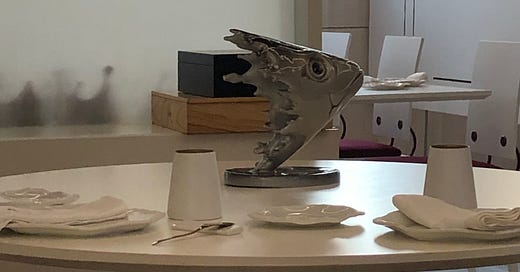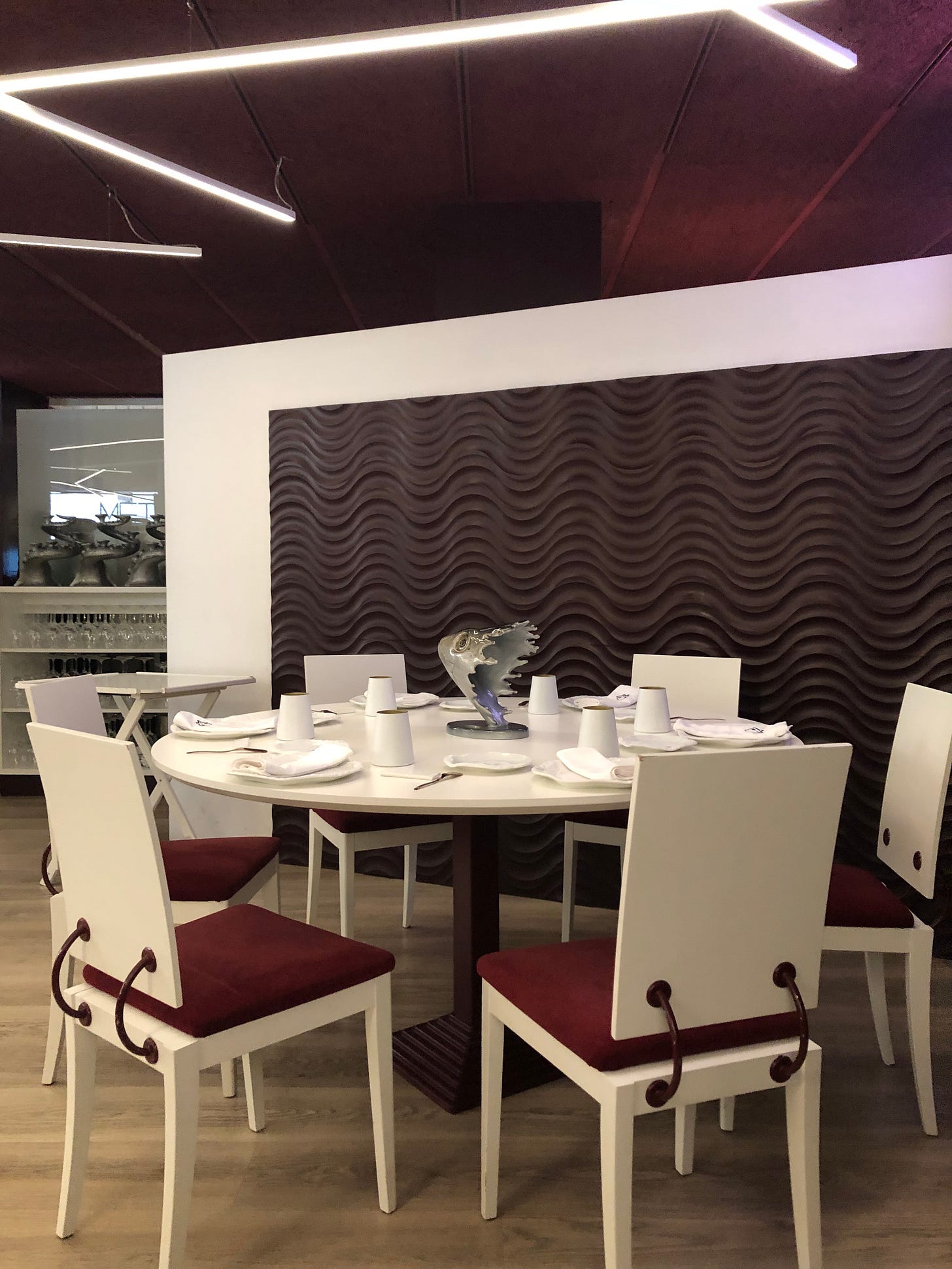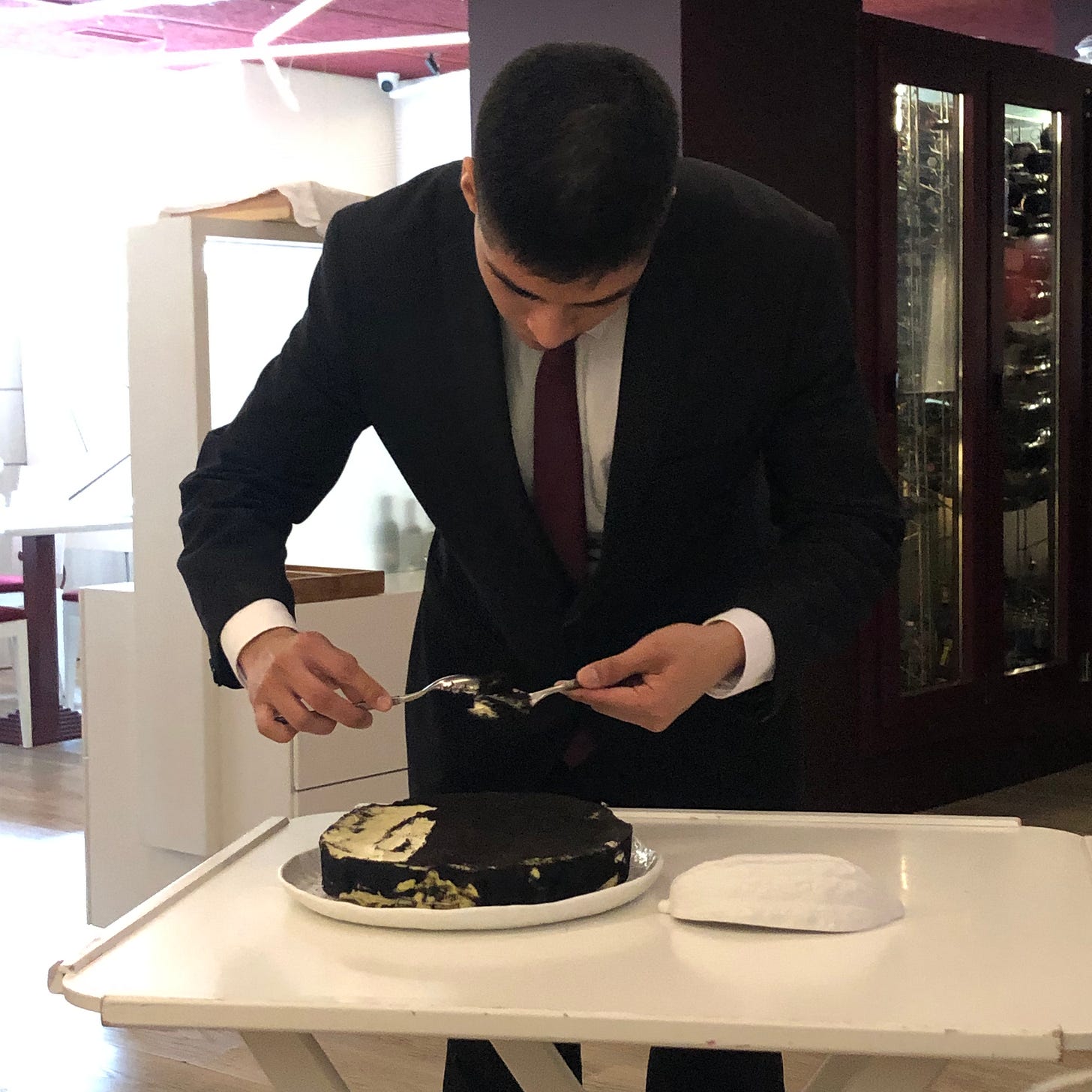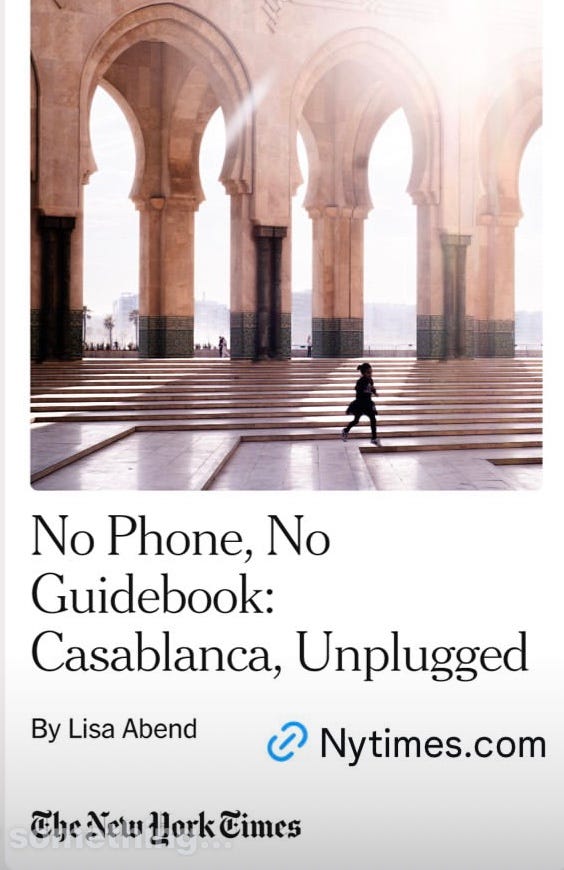I should have known better.
I’ve learned that after hotels, the most nerve-wracking arena of unplugged travel for a lot of people is restaurants. I’ve written about the reasons for this before— about how, in our food-obsessed age, the possibility of a bad or even so-so meal has come to seem like an unacceptable risk, and so we arm ourselves with lists and recommendations and annotated maps pulled from all corners of the internet as a talisman against a ‘wasted’ meal.
In an upcoming How To Unplug post, I’ll offer some advice on how to determine IRL where to eat, and chief among those tips is going to be: Read the Menu Before Entering. A menu can’t tell you if a dish is well-prepared, and if it’s one of those Nordic-influenced documents where every item on it is an adjective-free triptych of ingredients (scallop, hay, blueberry), it won’t even tell you how. But it can tell you if a chef is bringing any imagination to an often standard roster of dishes. Or—and I promise you this possibility is far worse— too much imagination.
That was the case of a restaurant I found just around the corner from my hotel in Teruel. The menu was affixed to podium outside, and was an exceedingly strange document. Although Teruel is located over 100 kilometers from the Mediterranean and 15,000 kilometers from Japan, the restaurant specialized in bluefin tuna and wagyu beef. Nor did it confine itself to the normal cuts of these luxury ingredients: dishes included wagyu tongue, tuna tongue, tuna marrow, tuna tripe, and something that will haunt my nightmares for years to come: tuna eye butter.
The menu beckoned diners to “explore flavors without limits,” which probably explains the wagyu tongue served in a liquorice sauce with a black olive sphere. Or, terrifyingly, the tuna sponge cake with beetroot ice cream and sweet wine reduction. (Mercifully, it does not explain the lamb milkshakes with citrus butter that appear on the English menu; it is only a poor translation of the more palatable ‘lamb sweetbreads’ that does that.)
This is exactly the kind of ‘creativity’ that would normally send me scuttling to the nearest bar for a ham sandwich. But then, toward the back of the document, I found the menu del día. These lunchtime prix fixe menus were introduced in the 1960s, just as Francoist Spain was beginning to open up to tourism, and were designed to attract foreign visitors. But the excellent value—three courses plus wine, beer, or water for usually less (today) than 25 euros— made them just as popular with Spaniards themselves. And on this particular menu del día was a dish that I adore beyond all reason, migas.1
And so, I entered the restaurant we shall call ‘System.’2
I knew immediately it was a mistake. The entryway opened onto the bar area where a photographer with a lot of gear and a very bright ring light was taking shots of some impossibly intricate-looking dish. I stood there blinking awkwardly in the glare before the man behind the bar, who wore a chef’s jacket with his name embroidered on it, asked if he could help me. I inquired if the restaurant was open, and although he said yes, there was something in his tone that made me feel stupid for asking.
He came out from behind the bar and led me to the dining room. It was, quite honestly, one of the uglier I’ve ever been in, with tables and chairs made out of white formica, the latter’s backs and seats joined together with what looked to be red drawer pulls. In the center of each table was a life-sized sculpture, in metal, of a tuna head. Those are going to haunt my nightmares too.
There was no one in the place, and yet he seated me at a vast round table (to be fair, all the tables were vast) that could have easily fit 6, and removed not only all the other place settings, but all the other chairs as well. I was alone in the corner, staring out across a pale sea of molded plastic and silvery tuna heads.
The chef brought me the menu. I headed straight to the menu del día, whose offerings were much more traditional than the Thai curry tuna ear terrine3 and other delicacies on the main menu. In addition to the migas, I chose a venison stew with potatoes, and flan for dessert (admittedly, it was a passion fruit flan, but close enough). “We are known for our tuna and wagyu,” the chef said. “Are you sure you don’t want to try something else?”
I assured him I was very happy to be eating migas. He looked perturbed. “The portions on the menu del día are quite small. Perhaps you’d like to add something?”
I found this odd, since the whole point of a menu del día is that it is designed to be hearty and filling. So I declined. He did not seem pleased, and when he returned with my glass of wine, he tried again. “I really recommend you get the amuse bouche. Our guests normally do.”
Really? He was upselling me? With peer pressure?
I declined one more time, and the chef sulked off. Before long, a sweet young man in a black suit rolled up to my table with a cart on which rested a basket of bread and an inky black disk the size of a dinner plate. He produced a spoon and drew it across the pitch-black surface to reveal yellow beneath: it was butter. He then produced another spoon and proceeded to shape the scoop of butter into a quenelle. This took an inordinately long time, in part because it required the poor waiter, who by now was discreetly sweating, to incorporate the black ash evenly throughout the butter until the whole lump had turned an unappetising gray and was melting slightly along the edges. Also, for reasons known only to the chef, it was flavored, I believe, with lime zest.
By this time, other guests had come in, all of whom were apparently more compliant than I was, because before I knew it, the chef and his young assistant were bearing great silver tentacles to the table. The cephalopod suckers had been replaced by tiny bowls, atop which sat croquettes and other bites: these were the amuse-bouche I had refused.
The needless theater, the weird menu, the lonely table and implicit critique of my order, even the ridiculous box that held the bill—shaped like a chef’s toque but so heavy it was difficult to open–added up to a dining experience that was not pleasant. (Although I should point out that the chef hadn’t lied: the portions were in fact so small that the flan was actually half a flan–a neatly cut semi-circle). And so, at System, I got the thing that so much internet-enabled travel, with its lists and recommendations and annotated maps, is designed to avoid. I got a bad meal.
Yet although I could not say I enjoyed lunch, I didn’t regret it either. While I was in the restaurant and being subjected to all the heads and tentacles and grey butter, it had seemed clear to me that I was facing a classic case of hubris, a chef for whom simply being a good cook (which he was: all three of my traditional courses were quite tasty) wasn’t enough. He had to be an artiste.
But as my annoyance waned, it was replaced by curiosity. What was it like to have that ambition and not quite be able to pull it off? What was it like to have it, and be in a town with a population of 40,000 and a two hour drive to the nearest big city? Did the locals see him as a great chef (all the other diners seemed pretty happy, I have to say) and was that enough for him? And how had I seemed to him, this foreign woman in jeans and sneakers who turned up without a reservation and stubbornly refused all his recommendations? Which of us was the one suffering from hubris?
I’m not going to defend it: it was still a bad meal. But any meal that has me still wondering what was going on in the head of the person who prepared it seems to me like a good story. And that means it can’t have been a waste.
Also, the migas were delicious.
The Unplugged Traveler Expands Her Remit
I have a story out in The New York Times this week in which I travel unplugged to Casablanca, Morocco. I had pitched the piece as a sort of grad exam for this newsletter—what would happen if I took everything I’ve learned from traveling unplugged through Europe and tried to apply it someplace where language, culture, and urban layout would make it more challenging? For ethical reasons (no self-promotion in the New York Times!) that context didn’t make it into the final version, but if you’ve been following along, you may remember where the lessons I describe first got learned.
Migas are about as peasant food as it gets: stale bread crumbs slowly cooked with olive oil, garlic, pimentón, and the leftover ends of whatever chorizo happens to be lying around. Often topped with a fried egg, or, in its Extremaduran version, with grapes.
Not its real name, but this is not a review, plus chefs work hard and don’t deserve to have their business ruined by random guests with Substacks.
I didn’t know tuna have ears either.









So much appreciation and lolz for this and for questioning our collective obsession with researching our restaurants(guilty). I used to date a chef whose rule was “if they have to tell you in the menu how good the food is… it isn’t”. Seems like a handy one to keep in mind.
An adage I swear by is “beware the artiste” - in every field! Let this be a lesson learned, Lisa.